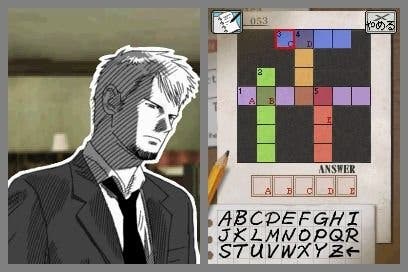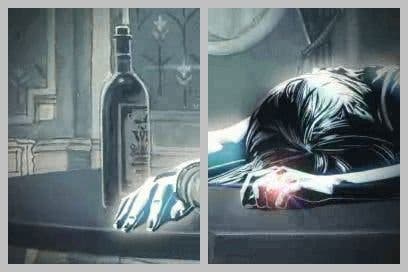Last Window: The Secret of Cape West
No pane, no gain.
Last Window offers views onto several forgotten vistas. Immediately, it paints a vivid picture of an American city at the dawn of the 1980s. Gleaming skyscrapers stretch at the clouds, each a pointed testament to the unshakeable wisdom of modern capitalism. Keeping their distance, on the outskirts of the city centre, tower blocks stand, heads down, providing temporary accommodation to the workers who turn the cogs of the sun-baked metropolis and the deadbeats who clog them. Rendered in stylish watercolor and black ink, the city scenes that run throughout the game are drawn in an anachronistic style, a manga-ish take on late seventies Americana that reinforces the historical context through its aesthetic.
It's in one of these tower blocks that your character resides and, at this close distance, CiNG's meticulous attention to period detail is revealed. Every prop is in keeping: the flares of the preceding year have shrunk to skinny-fit jeans, just as the telephones have ballooned to the size of shoeboxes thanks to their new-fangled answering machine additions. Every aside about solar-powered pocket calculators that cost the earth, or pagers that shrink it, speaks of technology's acceleration from a stroll to a jog, and the bulky gadgets are as key to the ambiance as the Miami Vice-style soundtrack and film noir direction.

The story that fills this scenery is a throwback, too. You play as a 34-year-old ex-cop, a stubbly private detective slouching in cars that are three feet wider than they need to be, working jobs several tiers of crime beneath him. Kyle Hyde, familiar to players of CiNG's Hotel Dusk - with which Last Window shares a universe - is an amalgam of many pulp fiction private detectives, from Blade Runner's Rick Deckard to Policenauts' Jonathan Ingram.
The narrative structure is simple, divided into 10 chapters spread over the course of a week. You start by investigating your landlord's reasons for evicting you and the other tenants of Cape West, and end by disturbing the murky waters surrounding your father's death. It's the kind of story rarely presented by videogames in 2010, and in this context the cliché turns into something fresh and unexpected.
In its systems too, Last Window presents a style of game long slipped out of fashion, a point-and-click adventure game that limits innovation to its stylish presentation, leaving the mechanics of clue hunting and puzzle solving largely unchanged. For developer CiNG, whose modern adventure games have been well received but sold poorly, Last Window represents perhaps the last opportunity to find an audience wide enough to sustain their passion. While the slow-paced storytelling and ponderous puzzle-solving are an acquired taste, the confident execution ensures that the game and its developer deserve just that.

The DS is held like a book. When exploring a new location, architectural floor plans of your environment are shown on the touchscreen to the right. As you drag the stylus around this area, so the 3D view in the left-hand screen moves around. As well as providing a smart, stylish way to navigate the world, the system offers two views on the objects around your character, with objects in the schematics making clear the objects seen in the 3D viewpoint.
There are four basic interactions when exploring a location, each accessed via an icon at the bottom of the right-hand screen. The door icon allows you to move from room to room, while 'talk' will instigate a conversation with any willing third party. The magnifying glass will, at appropriate locations in the environment, switch to a close up of the object, with a slider that allows you to rotate the view to pick out details that might not have been immediately obvious from the wide-angle shot. Herein some of the game's puzzles lie, as you seek to discover key objects in a gentle modern rendering of the hunt-the-pixel style puzzles of classic adventure games.








